It was cold. But that was not the heart of it. It was cold that lay around the heart of it.
There had been a series of volcanic eruptions, but the big one occurred in the year that Napoleon was defeated. Mt. Tambora in Indonesia exploded in one of the most massive volcanic eruptions since genus homo evolved. Together, those volcanoes threw enough ash into the air that sunlight reflected from it back into space. Temperatures dropped and rivers remained frozen over in August.
Trade was disrupted, and there were few crops to carry in any event. People died in their thousands.
The ash reflected light, which meant the world was literally darker. Crops were so bad in the northeast that people moved en mass to the midwest, creating the population, crops, and industry the United States depended on to become such a powerhouse in World Wars I and II.
Sunspots appeared which could be seen with the naked eye.
People thought the Apocalypse had come. Others doubted such faith in the light of the apparently rapid progress of science.
This is what surrounded the heart of the thing.
The heart itself was some friends who were on vacation. Lord Byron, Percy and Mary Shelley, and John Polidori found Switzerland hideously cold in July, so they stayed indoors and entertained each other by writing scary stories. In doing so, they changed comic books forever, or would as soon as comic books were invented.
To keep from boredom, they each wrote scary stories and read them out.
Byron wrote a long poem called “The Darkness.” It had a theme of physical darkness and the darkness in people’s souls. It is not much remembered except for the history of Lord Byron, himself. Writers, for example, and in that I include comic book writers, do not use it as a source in the way Chris Claremont used Dante’s Inferno as a source for the X-Men.
Percy Shelley wrote “Fragment of a Ghost Story”. It’s a short poem that has largely been forgotten.
John William Polidori was a doctor, having qualified at age 19. He was in fact Byron’s physician, since Lord Byron was chronically ill. Polidori himself would have problems with gambling addiction and depression. Historians generally disagree with the coroner and taken his death as suicide.
He wrote a novella which was an instant success and reversed the usual previous pattern. It was called The Vampyre, and where before vampires in fiction had been bloated, mottled, and coarse, Polidori introduced Lord Ruthvan. Lord Ruthvan is noble, pale-skinned, sophisticated, polite yet for some reason frightening, sexually alluring. Yes, the elements of later vampires were all there. Even the bit about passing through a village where the locals warn about getting indoors before dark because of the vampires.
The novella was published in 1819 and it set off a wave of vampire stories. This story started a genre just as Superman did. The hundreds, perhaps thousands of vampire characters in books, film, television, and comics lll descend from Lord Ruthvan. The story was modified, imitated, put in opera, and generally swept everything as a fad.
The fad ended and would later be revived with Bram Stroker’s novel, Dracula. It was like Superman in the forties gaining new superpowers and basically taking the form that would dictate all others. This was how the idea stuck and became a permanent part of Western culture: there would be no lawsuit to stop Captain Marvel on behalf of this Superman.
So when comic books came onto the scene, vampires became part of the fun. They have come into comics through books, movies, television shows, and anything else that was to hand. So Marvel had a long run mainly with Wolfman and Colan. In Marvel, the Dracula novel was pretty much nonfiction. Still a count, near immortal, impossibly powerful. When they started the story in the early seventies they felt they had to make it clear to the readers, no one was going to put on a costume and fight crime.
His first run lasted about seven years, from 1972 to 1979. But though Marvel has the most famous Dracula, they don’t have the only one. Fortunately, the company fell out from under the other one.
Atlas Seaboard also had one backup story of Dracula. In the origin story he was the Vlad the Impaler (but with a turban, I don’t know why), got killed, and was brought back as a vampire because the Devil liked his style and thought he’d cause a lot of pain to human beings. Atlas also had Vampire Planet in which the first crew to explore Mars comes back to find the whole world is ruled by vampires who suck the blood out of people who live in the streets. The seventies, what can I say?
Dynamite did a five-issue series, The Complete Dracula, which it has also released as a hardback. They seem to be planning to do more.
More recently Zenescope seems to have noticed Marvel isn’t doing much with their version of Dracula. So they’ve started publishing a barely clothed steampunk title, Van Helsing versus Dracula. But that particular title is only up to issue two.
The threat to Dracula has to date not been another Dracula, it’s been other vampires altogether. Among these is Gold Key’s Barnabas Collins in Dark Shadows. Originally Dark Shadows was a spoof soap opera with vampires, werewolves and ghosts. As they often did, Gold Key got the comic book rights for a song. And the comics found the audience the television show couldn’t reach. The soap opera lasted five years and was canceled without warning by management, but it was only saved in the first place by Barnabas Collins.
The TV Barnabas Collins was a villain, who would manipulate, victimize, and kill. He had a weird fixation than anybody who looked like his lost love should be turned into his lost love. Though he did have a friend in Quintin Collins, a werewolf with Logan hair before Logan was invented.
By contrast, in the Gold Key comic book Barnabas Collins tries to survive without anyone else but the bad guys getting hurt. For example, when he gets s scroll showing how to cure werewolves, he gives it to Quentin knowing that use of it will cause him, Barnabas Collins, to permanently die. As he turns his back, Quentin burns the thing without even opening it.
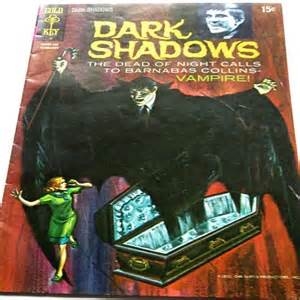
Unique among vampires, Barnabas in the Gold Key stories was monogamous to his lost love and was monstered by a witch named Angelique
The Gold Key title lasted 35 issues. Barnabas was revived by Dynamite and lasted 23 issues on his own and 6 issues in a crossover with Vampirella.
Dynamite has another vampire in Chastity, whom they got from Chaos comics. She’s a kind of underaged vampire who has to grow up while having become a vampire while trying not to hurt other people. The series is up to issue six and I’d like it to last a bit longer.
But the most famous vampire from comics, that is, started in comics, is Vampirella. She began in a black and white magazine, Vampirella, from Warren Publishing. Warren was a magazine company, which is to say they published magazine-sized periodicals sold on magazine racks, so the Comics Code Authority could rack off. They did, but Warren still nearly went out of business, surviving for some years by reprints of their early stuff.
What saved the company for a time was a little dressed for the times nearly pornographic vampire who didn’t want to hurt people, Vampirella. Her magazine has 112 issues between 1969 and when to company closed its doors in 1983. Of the twenty titles Warren published, three had more issues published.
Dynamite revived her and also put her in their steampunk series, Legendary, did a crossover with Barnabas Collins, and other versions. She also faced off with Dracula – the idea that just won’t die. She is clearly one of their more successful characters, possibly second only to the Shadow.
So, Dynamite has Barnabas Collins, Chasitity, and Vampirella: three vampires who are good guys. If you’re trying to sell to Dynamite I think I just found a formula they like. Those who remember my article on the Grim Ghost and good-guy horror, that’s it. A person with monsterhood thrust upon them, they are beset on all sides but refuse to give in and become evil. Oh, and a long-running history and having a ready-made fanatical audience doesn’t hurt.
None of all these vampire characters would have been possible without that story The Vampyre, and that wouldn’t have happened without the year without a summer. And it’s notable that the literature The Vampyre affected most was the popular sort. Sure, Dracula is considered a literary novel, and in its day The Vampyre was considered quite highbrow. But these days vampires appear in the media of the hoi and the paloi alike.
Of course, you could argue that the success of literary vampires depending on many years of the mistaken, silly, superstitious peasant belief in the existence of real vampires. I have never seen the mechanism for this shift in the focus of interest explained. And it totally forgets there was another member of that group in Switzerland, on Lake Geneva, on the cold day in that year without a summer.
Her story would grow and be the most successful of all of them. It achieved everything The Vampyre did in form and extent. Arguably – and, yeah, I will be – it exceeded it. And, though you may find connections to what went before, no one can deny the fourth member, then Mary Wollstonecraft, widow of Mr Godwin (whose father wrote the first detective novel; Poe’s works were all short stories), and soon to be the second wife of her second husband, Percy Shelley, wrote a watershed in literature.
She was engaged to Shelley while they were together in Geneva. She would bury both her husbands and all but one of her children. It would be argued that Percy Shelley, not Mary Shelley, was the real author of Frankenstein.
Her book, Frankenstein, or the Modern Prometheus would be issued in two separate editions that verge on an Earth One-Earth Two explanation. She also wrote The Last Man, a science fiction novel set in the 21st century, but that novel was almost unknown until interest revived through academia in the 1960s.
But it’s Frankenstein that people will always associate with the name Mary Shelley. And it is Frankenstein which gives the world a new folk monster, defining a transition between two ages, and giving a number of comic book and movie characters.
Like vampires, who were changed with Dracula, Frankenstein underwent a change before he took his modern form. In preproduction for the first Frankenstein movie they had a significant problem: they didn’t know what he looked like. The book does not give details, or at least not details that they could use.
In the book he started out quite handsome and became more disheveled as time and peasants with pitchforks went by.
Neither of the other films (1915 and an Italian one of 1921) had a memorable image for the monster, either.
So in 1931, with Boris Karloff in the role, they came up with the squared head, the green pallor of the skin which showed up better in the posters and windowboards than in the black and white film, the monstrous size, and those bolts in the neck. None of this is from the novel. It all came from Hollywood and has survived as “the” image of Frankenstein’s monster to today. It is certainly the one used in every comic book.
DC latched on to Frankenstein just after World War II and haven’t looked back since. The original Frankenstein was the original Frankenstein. Like Marvel with Dracula, they just sold the novel as nonfiction. In DC, Frankenstein faced off against Batman, who was about to enter his science fiction phase. Appropriate, since in his pre-war days he killed vampires. The same character would later face Superman and the Phantom Stranger while under the thrall of Count Dracula.
He is also one of the Creature Commandos, a World War II task force of monsters (a werewolf, a vampire, a gorgon, and Frankenstein’s monster under the command of a “normal” human) to fight Hitler. Flowing on from that, he becomes one of the Seven Soldiers of Victory in one of their later incarnations. He is an Agent of S.H.A.D.E., and is in Justice League Dark. And another version of him, Young Frankenstein, had a short run as a member of the Teen Titans. In other words, he is one of the best buys DC never had to make.
By contrast, Marvel got in later and did not do as well – sort of. Frankenstein was an inspiration behind one of Marvel’s last monsters or first superheroes. He even kept the same theme of being misunderstood by the peasants with torches and pitchforks, or in this case, guns and bombs. The Hulk, as Lee has said, was partly inspired by Frankenstein. The Hulk has gone far from that original inspiration, but he does show the squared head characteristic of Frankenstein from Universal Pictures.
The second attempt at Frankenstein started in 1973, eleven years after the Hulk, when Marvel was jumping on the monster bandwagon no one had said started, and they jumped on it with both barrels. That is, they revealed a lot about themselves in how they went about it. They started with Mary Shelley’s novel but wanted the monster to look different from the Universal Pictures version.
They got what they wanted for eighteen issues. But they moved the story from the nineteenth century (when it was set in the time of the original novel) to the modern world. Sales started strong but dropped off and maybe that was why.
When Marvel next brought up Frankenstein he was a clone of the original created by the Nazis to destroy Captain America. I did not make that up. Somebody else did.
And, later, another clone of Frankenstein’s Monster would join SHIELD’s version of Creature Commandos though with enough changes to make it a variation rather than a repetition.
Other than that there have been only a few other separate characters, like I, Frankenstein, which was later made into a movie, or Doc Frankenstein, written by the Wachowski brothers. There was a Dell comic in which a Frankenstein-type monster decides to put on a bright red costume and fight crime. It didn’t last long.
But if he were a superhero we would recognize Frankenstein as having been in the two largest companies in various forms from about 1948 until the present. That arguably hasn’t been an uninterrupted presence, but he has been there basically non-stop since the sixties. As such, he is in the league of characters like the Blue Beetle and Dr Strange.
Dracula truly was a monster so they had to make new variations of his style of vampire. Barnabas Collins only found real fame when he ceased to be a knock-off of Dracula. He ceased to be a villain and became a tortured man. Vampirella, too, became a heroine trying to survive and protect others.
In Frankenstein that formula already existed. The peasants did not understand him so they attacked. It was like when one of the early hot air balloons crashed in France. Peasants thought the Moon had fallen from the sky so they attacked it. Why they had to attack it I do not know. But the same attitude applied to peasants in the novel about twenty years later.
The misunderstood, misshapen man would seem to be a godsend for comic books: Mary Shelley came up with the X-Men formula a century and a half before Stan Lee did. Perhaps they need to play him less against other monsters like werewolves and vampires, and more against human evils and the inability to be seen for what he is.
Four people gathered on a cold night in the middle of summer, when people starved and for many the end of the world was literally upon them. Suicides were common and answers surely were not.
But the weather went back to normal. The United States came out of it stronger (it did that a lot in those days) with new agricultural areas and new industries.
But those four who gathered to entertain each other genuinely did change the world. We got the dangerous elite from The Vampyre and the misunderstood everyman from Frankenstein. We got, in essence, something everyone held dear, a sense that we can do better if people will see us as who we are. This belief that there is more to us is at the core of the secret identity.
Something to think about on some cold night in a year without a summer.

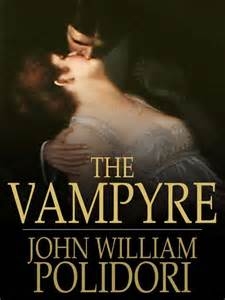
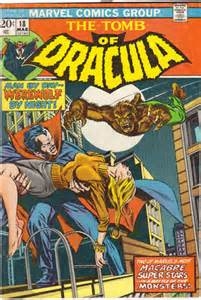
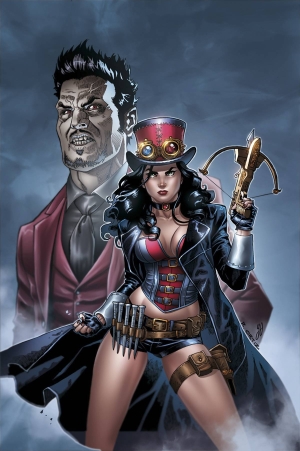
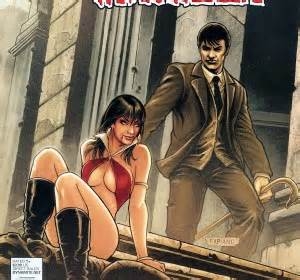
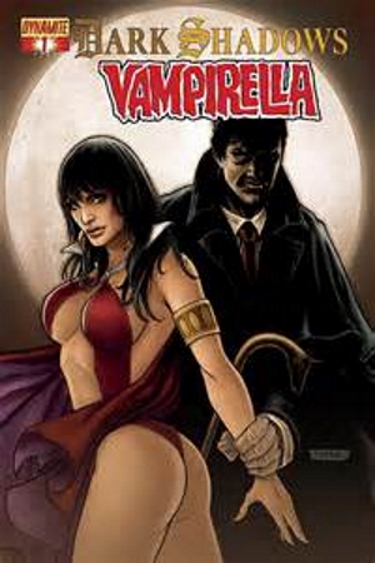
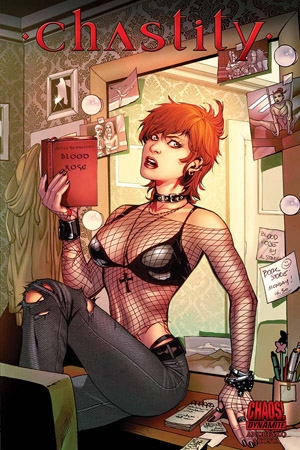
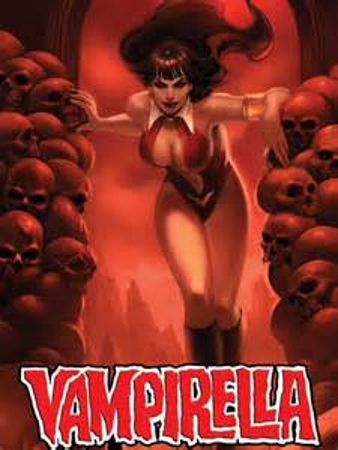
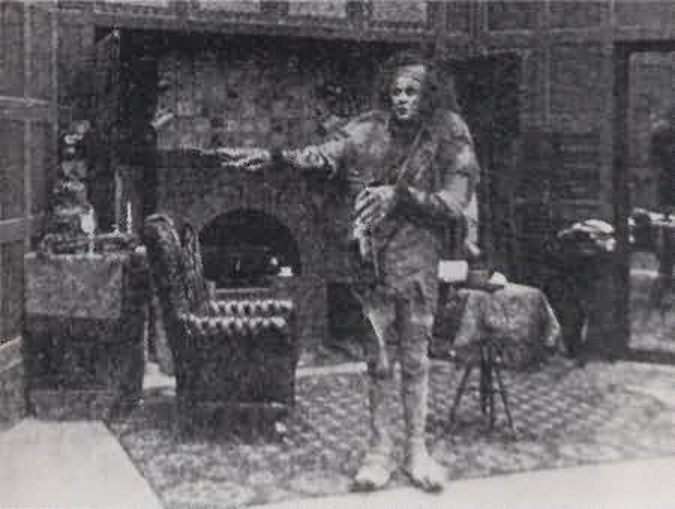
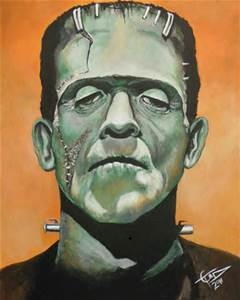
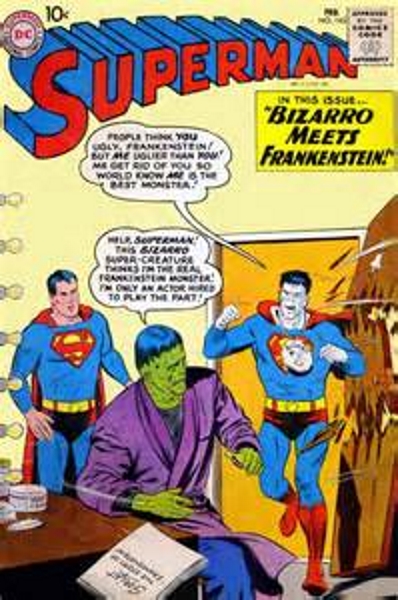
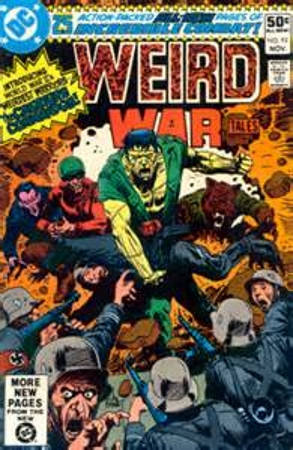
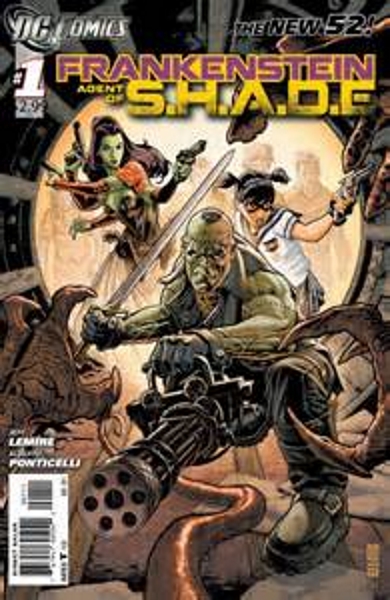
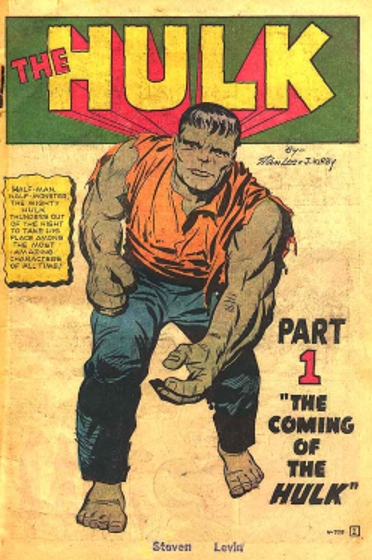
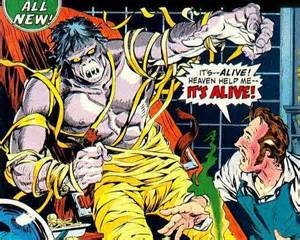
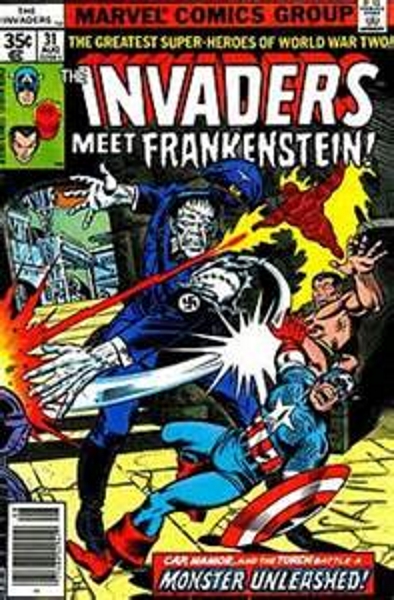
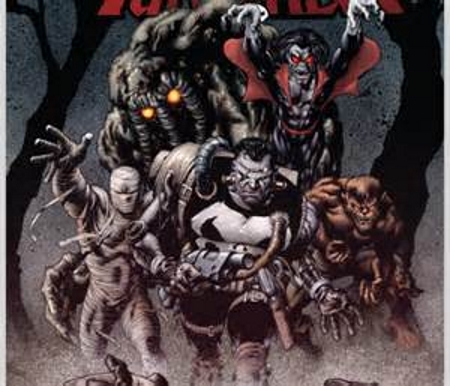
Comments are closed.